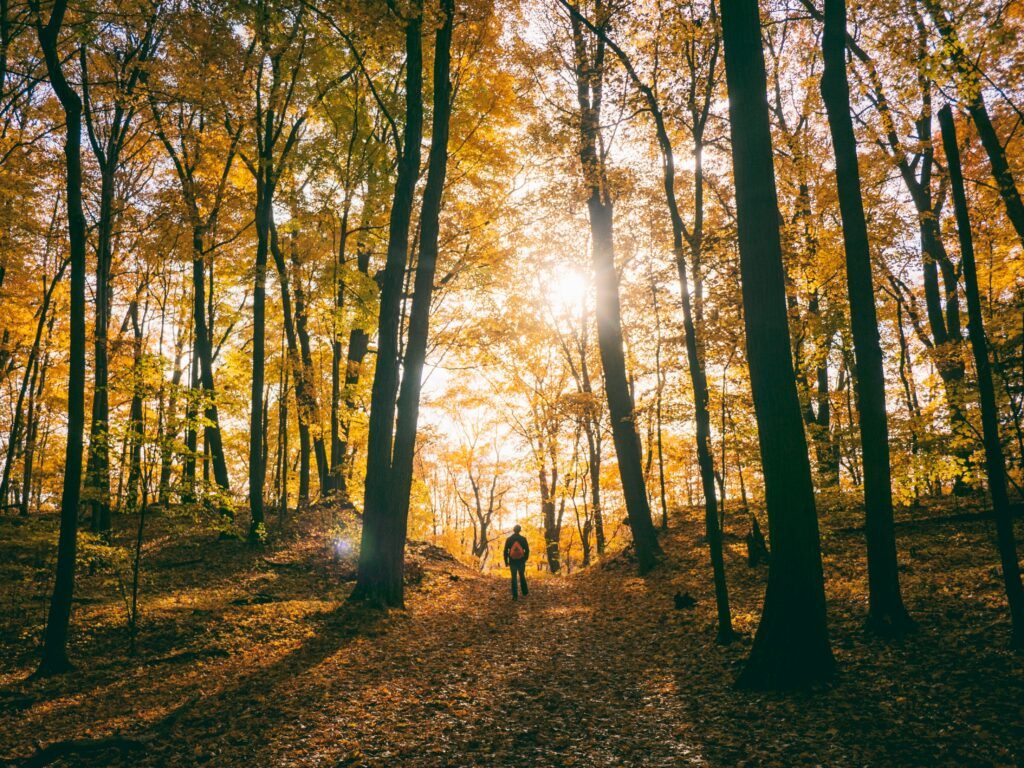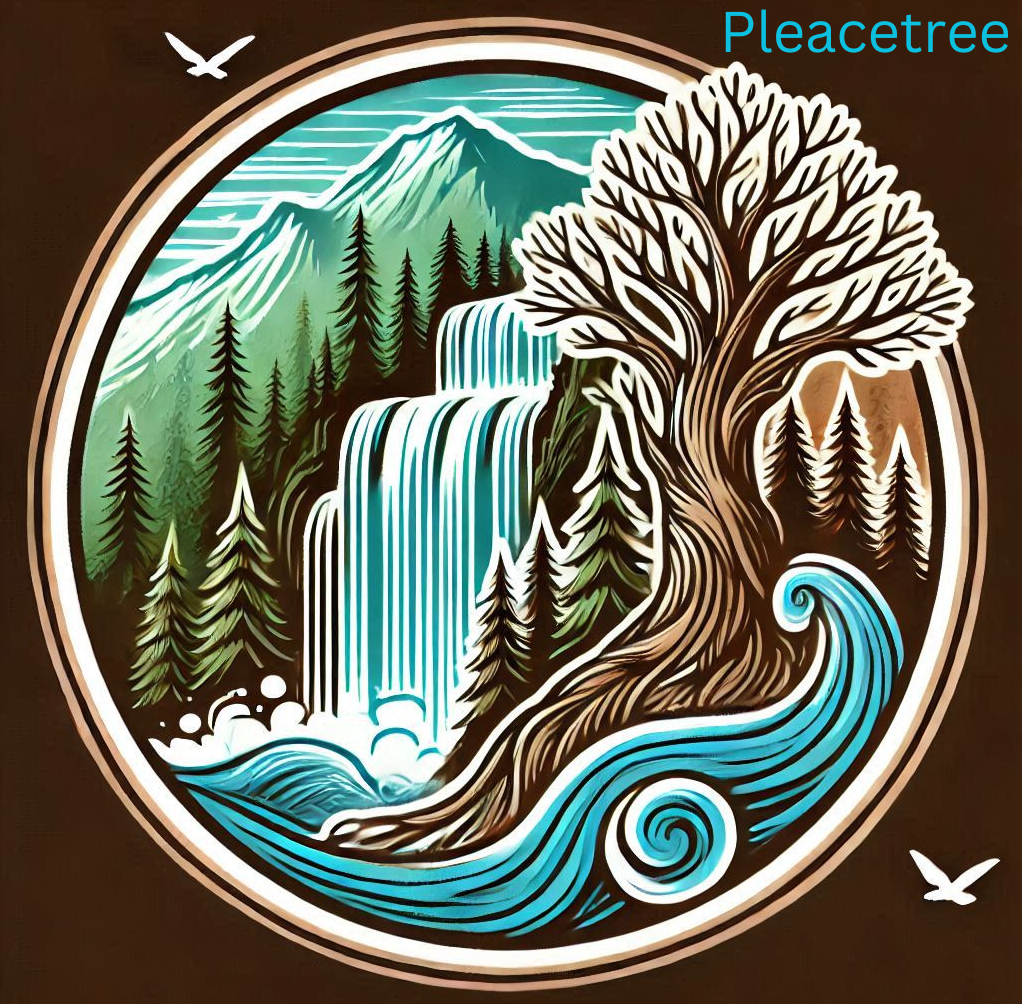
I like trees because they are both beautiful and majestic. No two trees are alike while each one has its own characteristic. The term Shinrin-yoku was coined by the Japanese Ministry of Agriculture, Forestry, and Fisheries in 1982 ( the year I was born :))), and can be defined as making contact with and taking in the atmosphere of the forest. When a person takes a walk in the canopy of a forest there are calming, rejuvenating and restorative healing benefits to be achieved.
Trees improve mental health
When we are in nature, let alone the forest, it brings about better health, creativity and even kindness toward one another. Similarly, being in the forest helps to combat everyday stress, anxiety, depression, and anger that is imposed on many people with our day to day life. Spending time in the forest is known to strengthen the immune system; improve cardiovascular and metabolic health; and boost overall well-being. After a long walk in the woods people are able to sleep longer and more soundly.
The trees in the forest have higher concentration of oxygen that exists compared to an urban setting. The presence of plant chemicals called phytoncides contain natural oils that are part of a plant’s defense system against bacteria, insects, and fungi, these natural fragrances are also beneficial to the person amongst the trees. Evergreen forests with the concentration of pines, firs, ceders, spruces and conifers have the greatest amount phytoncides so they have the greatest health promoting attributes. Find your local Pine forest and absorb those natural defenses for the trees while promoting restorative health in yourself!
Value in tree’s
Trees provide us with many values such a timber. Timber is the source of building/ construction and what most of all are shelters/ homes are made out of. They provide the doors, cabinets, floors, furniture and thousands of other items. Wood pulp is used to make paper, which in return creates books for education and learning. A trees bark is the source of many of our modern day medicines like aspirin. This was first derived from willow tree bark that contains a chemical called salisan.
The Para rubber tree (Hevea brasiliensis) is an economically important tropical tree species that produces natural rubber. This is an essential industrial raw material. On top of all this, trees are the primary source for tools; many of these include shovels, rakes, wheelbarrows and ladders. Also. many sporting goods are made out of trees like baseball bats that are made out of the White Ash (Fraxinus americana) tree, hockey stick shafts, golf club heads, and others. According to the U.S. Department of Agriculture, “One acre of forest absorbs six tons of carbon dioxide and puts out four tons of oxygen. This is enough to meet the annual needs of 18 people.”
The original medicine
Hippocrates, 460-380 BC, who was known as the “Father of Medicine,” classified herbs into there essential qualities of hot and cold, moist and dry, and developed a system of diagnosis and prognosis using herbs. The number of effective medicinal plants he discussed was between 300 and 400 species. Many western herbal medicines used by Hippocrates are still commonly used today include fennel, cinnamon, clove, chaste-berry, anise or licorice, coriander, garlic, St John’s wort, white willow bark, Valerian, linseed, peppermint, chamomile, celery, clove (oil), Viscum album, elder-wood, sage and nettle.
Native American people were excellent naturpaths to incorporate plants into there medicinal knowledge. They first started using plants and herbs for healing after watching animals eat certain plants when they were sick. In order to protect these plants from over harvesting, the medicine men used to pick every third plant they came across.
Medicinal trees
Humans have been using medicinal trees for thousands (millennia) of years. Many medicines are extracted from the wood, bark, roots, leaves, flowers, fruits or seeds of many trees. These plants are essential to the health and well-being of millions of people. Many areas where pharmacies are limites, often the local people will have knowledge of how their plants can help heal them.
There are many trees that have medicinal properties, one of the first tree whose medicinal properties comes to mind is the Ginkgo (Ginkgo Biloba) – It is an easy tree to identify due to its fan shaped leaves. It has a status of being a living fossil that dates back to 200 million years old. A living fossil is prehistoric that has lasted the test of time. The Ginkgo tree is a common urban tree because it has the ability withstand harsh conditions. These conditions include soil compaction, pest resistance, drought, and cold. Its medicinal uses come from its leaves and seeds that are able to ease the symptoms of memory loss, dietary problems and asthma.
Here is a list of a few of the other trees that can be benefical if you know how to idenify them and use them correctly.
Hawthorn (cratagus sp.) – used to counteract high blood pressure, heart failure, and chest pain.
Sassafras (sassafras albidum) – A tree species that has three distinct leaf types. It’s known for its aromatic smell, and brilliant fall foliage. Sassafras tree has some of the most medicinal benefits. Known to sure almost any human ailment the most common are its roots and bark were commonly used to create a root beer like tonic and tea from its leaves were touted to treat everything from skin sores to bronchitis to hypertension.
Witch Hazel ( Hammamelis virginiana) – a small under story tree with a cult following for the astringent extract collected from its leaves and bark that is said to ease inflammation and soothe sensitive skin.
Slippery Elm (ulmus rubra) – contains mucilage that can help with mucous membrane issues. It’s most commonly used to soothe the digestive tract, and to treat sensitive stomachs. Powdered slippery elm bark is used to soothe wounds, and it’s also thought that taking a pudding thickened with the powdered bark can help speed bone healing. I’ve taken slippery elm lozenges for sore throats with great success.
Basswood (tilia americana) – Linden tea made from the flowers is used as a treatment for anxiety, insomnia, and ADHD. Herbalists love it for children because it’s so gentle.
Sugar Maple tree (Acer saccharum) – Maple syrup is especially delicious, but the sap itself can be drunk right from the tree. Not only is maple sap refreshing and deliciously sweet, it’s also medicinal. Maple sap is drunk traditionally in Asia to strengthen bones and it has just the right mix of minerals to do the job. It has also been shown to lower blood pressure, prevent hangovers, prevent ulcer formation and support a healthy immune response.
Black Walnut ( Juglans Nigra) – Black walnut trees grow wild in many parts of the country, and they produce a tasty edible nut. It can be a bit bitter and astringent, but if they’re promptly removed from the outer husk the flavor is greatly improved. Black walnut husks are used as a traditional dye for hair and as an all-natural ink. Medically, walnuts are a well-known purgative which helps to cleanse the body
There are many things healing about trees
I can go on for days discussing the healing benefits of the medicinal nature of trees. Without trees releasing oxygen life would not exist. They provide all living species all kinds of benefits which include the ability to heal. If you have any questions on how trees heal please leave a comment or email to let me know.

